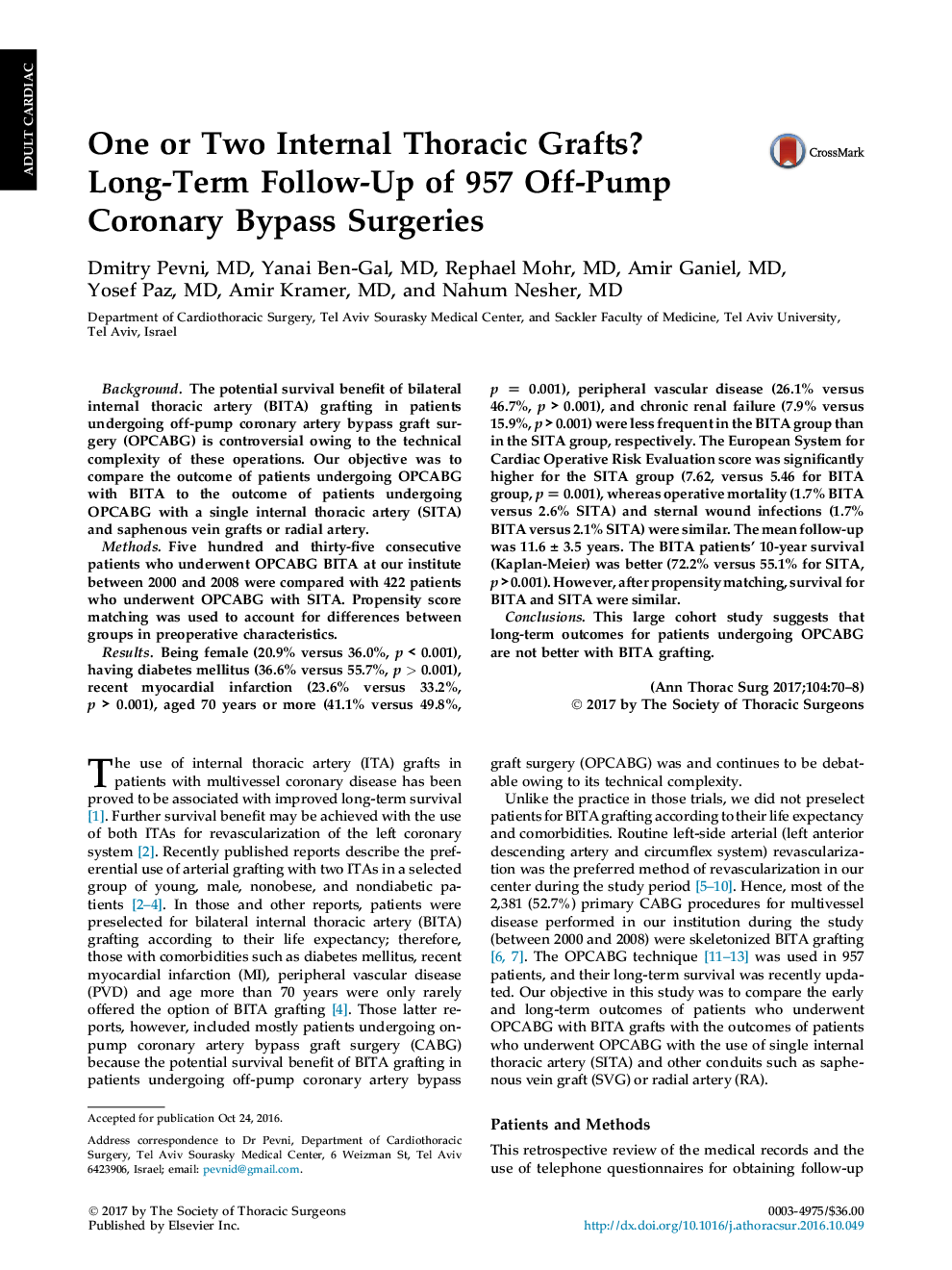| Article ID | Journal | Published Year | Pages | File Type |
|---|---|---|---|---|
| 5596838 | The Annals of Thoracic Surgery | 2017 | 8 Pages |
BackgroundThe potential survival benefit of bilateral internal thoracic artery (BITA) grafting in patients undergoing off-pump coronary artery bypass graft surgery (OPCABG) is controversial owing to the technical complexity of these operations. Our objective was to compare the outcome of patients undergoing OPCABG with BITA to the outcome of patients undergoing OPCABG with a single internal thoracic artery (SITA) and saphenous vein grafts or radial artery.MethodsFive hundred and thirty-five consecutive patients who underwent OPCABG BITA at our institute between 2000 and 2008 were compared with 422 patients who underwent OPCABG with SITA. Propensity score matching was used to account for differences between groups in preoperative characteristics.ResultsBeing female (20.9% versus 36.0%, p < 0.001), having diabetes mellitus (36.6% versus 55.7%, p > 0.001), recent myocardial infarction (23.6% versus 33.2%, p > 0.001), aged 70 years or more (41.1% versus 49.8%, p = 0.001), peripheral vascular disease (26.1% versus 46.7%, p > 0.001), and chronic renal failure (7.9% versus 15.9%, p > 0.001) were less frequent in the BITA group than in the SITA group, respectively. The European System for Cardiac Operative Risk Evaluation score was significantly higher for the SITA group (7.62, versus 5.46 for BITA group, p = 0.001), whereas operative mortality (1.7% BITA versus 2.6% SITA) and sternal wound infections (1.7% BITA versus 2.1% SITA) were similar. The mean follow-up was 11.6 ± 3.5 years. The BITA patients' 10-year survival (Kaplan-Meier) was better (72.2% versus 55.1% for SITA, p > 0.001). However, after propensity matching, survival for BITA and SITA were similar.ConclusionsThis large cohort study suggests that long-term outcomes for patients undergoing OPCABG are not better with BITA grafting.
